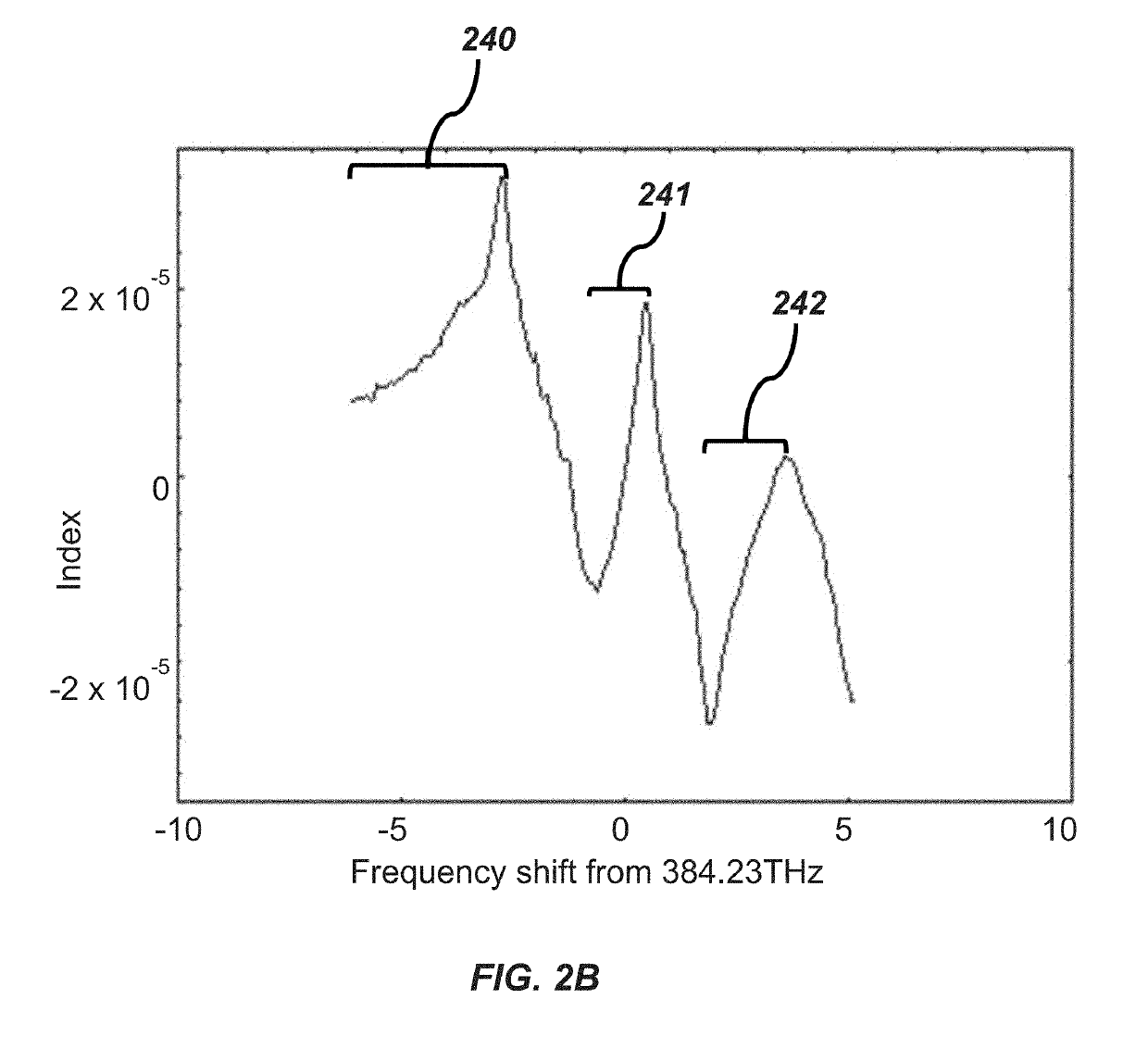Slow light imaging spectroscopy
a technology of slow light and spectroscopy, applied in the field of slow light imaging spectroscopy, can solve the problems of limiting the imaging capability to one dimension, reducing the light collection efficiency, etc., and achieves the optimization of the trade-off between time delay and absorption loss, reducing group velocity, and sufficient reduction of propagation speed
- Summary
- Abstract
- Description
- Claims
- Application Information
AI Technical Summary
Benefits of technology
Problems solved by technology
Method used
Image
Examples
Embodiment Construction
[0017]Disclosed is a method and system for slow light imaging spectroscopy (SLIS), which allows inter alia, for highly selective imaging of Rayleigh, Raman and Thomson scattering features associates with gases, plasmas, liquids and solids. It allows for imaging the molecular spectroscopic features by delaying the light with frequencies situated in the spectral region where an atomic gas filter cell provides a strong index of refraction gradient. Specifically, the strong positive dispersion provided by the hyperfine split ground state, or two isotopes with closely separated ground states imposes a greatly reduced group velocity, leading to what is known as slow light. Conversely, strong negative dispersion leads to so-called fast light, in which case the frequencies of interest have a negative time delay.
[0018]The disclosed approach takes advantage of two or more closely separated absorption features in atomic vapors such as rubidium, cesium, and mercury to provide strong index of re...
PUM
 Login to View More
Login to View More Abstract
Description
Claims
Application Information
 Login to View More
Login to View More - R&D
- Intellectual Property
- Life Sciences
- Materials
- Tech Scout
- Unparalleled Data Quality
- Higher Quality Content
- 60% Fewer Hallucinations
Browse by: Latest US Patents, China's latest patents, Technical Efficacy Thesaurus, Application Domain, Technology Topic, Popular Technical Reports.
© 2025 PatSnap. All rights reserved.Legal|Privacy policy|Modern Slavery Act Transparency Statement|Sitemap|About US| Contact US: help@patsnap.com



